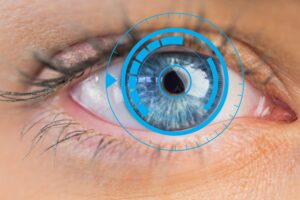 The teaching of history taking is so often delivered through verbal and written means, relying heavily on acronyms such as OLDCARTS, OLDCIPPA in MSK or more generally SOCRATES in medical training.
The teaching of history taking is so often delivered through verbal and written means, relying heavily on acronyms such as OLDCARTS, OLDCIPPA in MSK or more generally SOCRATES in medical training.
For leaners assimilating this knowledge and processes, these forms perhaps along with some role play can still lead to an incomplete understanding of the importance of history taking. Read more about history taking here.
Higher education continues to undergo various processes of change, pressurised by demands to provide education with the use of new technologies to support learning. This is no different in respect of UK podiatry training.
Teachers and students seek to make the best use of the opportunities to both modernise learning methods and make learning and teaching more effective.
Informal learning which occurs outside the HE establishment, for example using mobile technologies while travelling, is exciting for learners, yet regular course content can be less engaging or student centred. So the way forward is to try to consolidate the two.
Bligh et al (2010) reported a decade ago that perhaps the pedagogical approach of visual techniques and technologies to support student learning in higher education should be considered more because visual explanations can show parts and processes of complex systems directly, creating them should have benefits beyond creating verbal explanations (Bobek 2016)
Visual learning in the realm of higher education is often diagrams and pictures which can play a crucial role in supporting learning of complex ideas. Visual learning is however much more than just good diagrams however and representing clinical history taking as a diagram or process is difficult due to its variability and multiple layers.

Various studies report that 75 of all information processed by the brain is derived from visual formats. Furthermore, visual information is mapped better in students’ minds (Williams, 2009) Raiyn
Visual learning is defined as the assimilation of information from visual formats. Based on various studies, students remember information better when it is represented both visually and verbally. These strategies help students of all ages to better manage learning objectives and achieve academic success.
Visual learning also helps students to develop visual thinking, which is a learning style whereby the learner comes better to understand and retain information better by associating ideas, words and concepts with images.
References:
Why Use Visuals To Think About Patient Histories
The teaching of history taking is so often delivered through verbal and written means, relying heavily on acronyms such as OLDCARTS, OLDCIPPA in MSK or more generally SOCRATES in medical...
Read MoreThe Concept Of A Clinical History
Previous research has shown that physicians make a diagnosis from the patient’s history in 70-90% of cases. By the medical history, physicians garner 60–80 % of the information that is relevant...
Read MoreArticles
The more I think about the impact of clinical histort taking the more it seems to feed into so many aspects of MSK, podiatry, other specialisms within podiatry and learing on the undergraduate podiatry journey. When I get the inspirations, I’ll add the articles.


